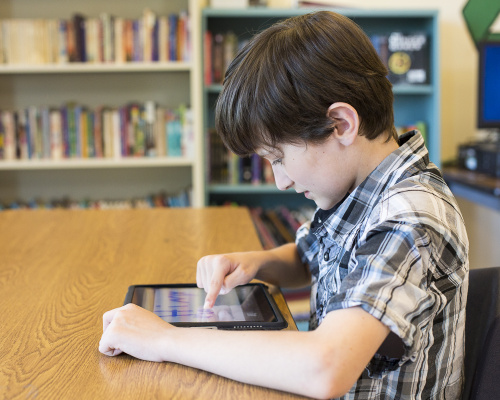Teaching Creativity—Can We Do It? And If We Can, How?
Date
We keep hearing how important creativity is in the workplace and how schools have to teach creativity along with math, science, collaboration, and dozens of other skills. When I started teaching, creativity was something we teachers valued. We claimed we could recognize it if we came across it, but we didn’t identify it as a specific learning goal. Some kids were creative and some weren’t. I don’t think it occurred to any of us that we could do anything to enhance our students’ creativity beyond rewarding it when we saw it. Furthermore, nobody thought much about creativity outside English or arts classes.
When I look back, I guess we were kind of stupid! Of course, creativity matters in social sciences, science, math, and even physical education! We saw examples of it every day in the technological advances that made our lives easier, more fulfilling, and more just. And can we teach it? Goodness knows we tried to teach other skills and attitudes that were just as abstract as creativity. No one questioned the need to teach honesty, respect, or responsibility. Surely, creativity can be taught as well.
An emphasis in the last decade or so on the “softer” skills like collaboration, critical thinking, and, yes, creativity, in the workplace as well as schools, has spawned a flood of information and advice on how to help students be more creative. Thinkers like Sir Ken Robinson and E. Paul Torrance have contributed to the conversation about how to teach students creativity.Two factors are critical for developing students’ creativity. Both are necessary if all students are to reach their creative potential:
- The classroom must be an environment that supports and encourages creative thinking and work.
- Specific creativity skills and strategies are explicitly taught and assessed in the context of academic learning.
The Creative Classroom
It may very well be that 20 years ago we didn’t think much about creativity outside the arts because the kind of work students did in their classes—rote memorization and the application of algorithms or rules to neatly designed problems and tasks—left no room for creative thinking. The teachers in those classrooms realized that creativity mattered in their subjects but doubtlessly believed that in order to be creative, students needed extensive content knowledge. In fact, I can remember a colleague saying that very thing! Creative thinking was for later. Unfortunately, later rarely came, and students just accumulated more and more skills and facts without applying what they were learning in creative ways.
We know now that students at any age can be creative with their content learning. In fact, creative efforts can help students understand content more deeply.
Creativity thrives in intellectually messy environments, where tasks are authentic and ill-defined, where students make decisions about what and how they learn, and where they collaborate with peers and others inside and outside the classroom. In these environments, risk-taking is encouraged, and the consequences for taking chances and failing are minimized. For some students, such an environment is enough to foster creativity, but most students need instruction and support.
Students need to know that creative endeavors are valued by their teacher and peers, and they also need to learn specific skills that will help them be more creative. The Partnership for 21st Century Skills lists skills critical for creative thinking, including the following:
- Think creatively—Use a variety of strategies to think of new ideas.
- Work creatively with others—Be open-minded, consider different perspectives, and solicit and incorporate feedback.
- Implement innovations—Bring creative ideas into reality.
Students can learn these skills through explicit instruction and modeling. For example, teachers could describe how they took a risk with a new idea or how they determined if an idea was worth pursuing. It’s important for students to see how experts, like their teachers, generate ideas, turn ideas into reality, cope with failure and learn from experience.
Students can develop self-direction by self-assessing their creativity with checklists and rubrics. As long as creativity is a focus in the classroom, and resources are in place to support creative thinking, students can learn to be more creative. Intel Education’s Assessing Projects resource has several assessments that can be used by teachers and students to assess creativity.
Technology and Creativity
The wide range of online tools and apps available for creative expression are already being used by students for both in-school and out-of-school projects. Where a research project in the 20th century was nearly always some form of a paper, today's students think in terms of multimedia and more engaging methods of sharing what they are learning. Teachers can be intimidated by their students' technological proficiency, feeling that they are not prepared to effectively implement these tools.
Fortunately, today's students love to experiment with technology. The teacher's job is to give the kinds of open-ended assignments that allow students to explore new technologies. If a teacher describes the qualities of an exemplary project, the kinds of thinking and reosurces that students should exhibit, the tool students use to do that is up to them. Let them play around with new tools. Teachers just need to focus on the content and the learning they want students to demonstrate.
More Resources on Teaching Creativity
Creativity in the Mobile Classroom
A free online course on developing student creativity with mobile devices
Creativity Tools
Strategies and tools to help you be more creative
Teaching for Creativity” Two Dozen Tips
Practical teaching strategies for developing creativity written by two leading educators in the creativity field.

